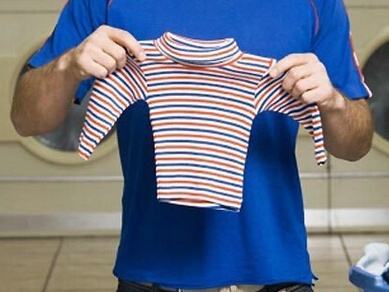
NewsInformation Center
Analysis of shrinkage rate of fabrics of different materials
2024/12/24
What is shrinkage? The shrinkage of fabric refers to the percentage of shrinkage of fabric after washing or soaking in water.
Generally speaking, the fabrics with the highest shrinkage are synthetic fibers and their blends, followed by wool and linen fabrics. Cotton fabrics are in the middle and shrink more, while the largest ones are viscose fibers, artificial cotton, and artificial wool fabrics.
The hygroscopicity of various fibers is different. Fibers with high hygroscopicity have a large shrinkage rate; conversely, the shrinkage rate is small. Natural fibers such as cotton, wool, silk, and linen have relatively high hygroscopicity, so the shrinkage rate is also large; while chemical fibers such as polyester and polypropylene have hygroscopicity, and the tightness and looseness of the fabric structure will also affect their shrinkage degree. Clothes with loose structures generally have a larger shrinkage rate than those with tight structures.
Cotton mercerized plain cloth: shrinkage rate is 3.5% in warp direction and 3.5% in weft direction;
Cotton mercerized twill cloth: shrinkage rate is 4% in warp direction and 3% in weft direction;
Cotton plain cloth: shrinkage rate is 6% in warp direction and 2.5% in weft direction;
General worsted woolen cloth: shrinkage rate is 4% in warp direction and 3.5% in weft direction;
Silk double crepe: shrinkage rate is 10% in the warp direction and 3% in the weft direction.
Cotton 4%--10%; Chemical fiber 4%--8%; Cotton polyester 3.5%--55%
Calculation method of fabric shrinkage rate:
1. Multiply the fabric size by 1 to reduce the shrinkage rate. For example, if a certain fabric shrinks by 1%, 100 meters * (1-0.01) = 99 meters;
2. Shrinkage rate: It is the fabric's own and provided by the manufacturer. If you want to calculate it, you need to experiment. For example, if you use 10 meters of cloth and measure it again after it is put into water, the result is 9.95 meters, (10-9.95) /10*100=0.5%.
Factors that affect the dimensional change rate after washing:
First, it is obvious that the fabric itself is different and the shrinkage rate is different;
Second, the density of the yarn weaving. The higher the density, the smaller the shrinkage rate; the higher the count, the smaller the shrinkage rate;
Third, the weaving printing, and dyeing processes are different, and the shrinkage rate is also different. Generally, high-yarn weaving and export products have stricter control over the shrinkage rate, and the size affected by the shrinkage rate will be calculated.


Previous: Xenon lamp aging test chamber water heating system circulation
N e x t : Application scenarios of surface flammability tester



